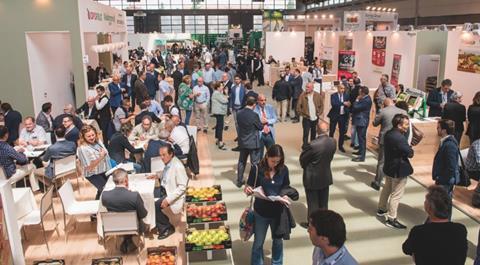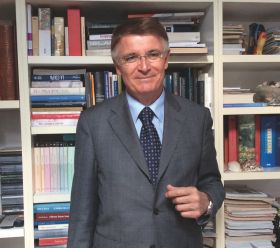
As Macfrut prepares to welcome visitors from around the world to Rimini once again, its president Renzo Piraccini offers his view on the current state of the Italian produce business.
What’s in store for visitors to this year’s Macfrut?
Renzo Piraccini: Macfrut is a diverse trade fair, focusing not just on products but on the whole supply chain. There will be lots of new features, starting with three dynamic areas: The Greenhouse Technology Village, a real village with horticultural innovations from technology providers, seed developers and specialist breeders; AcquaCampus, a 500m2 field where you can see more technologically advanced irrigation systems in action; and Macfrut in Campo will recreate a large field to demonstrate the most advanced agricultural machinery.
But Macfrut’s growing international scope is where its growth is strongest. More than 25 per cent of its 1,100 exhibitors and 43,000 visitors are from abroad. This year, the Country Partner will be sub-Saharan Africa, with more than 200 African companies present.
What important trends do you see in the Italian fresh produce business?
RP: Organics is still growing, ready-to-eat and convenience products are going to grow, and likewise products with a ‘superfood’ image, like avocados and ginger. I see greater challenges for more established products, like potatoes and citrus. Products with a local image are also destined to grow. There is strong demand for local produce but for the supermarkets responding adequately is hard work, because the supply is so fragmented.

Where do you see new commercial opportunities for Italy’s own fresh produce offer? What about new sales channels and new markets?
RP: One of the Italian fresh produce sector’s biggest problems is it remains too dependent on the internal market – by which I mean the European market, because selling in Germany or the Netherlands is no longer exporting. I continue to believe that the future, at least for those products that are able to do so, lies in expanding sales markets. One of the most interesting is the Persian Gulf, which today represents less than 2 per cent of Italian fresh fruit and vegetable exports. I think it could be worth much more. Another strategic market is China, even if the current phytosanitary barriers don’t allow Italy to capitalise on every opportunity in that market.
What particular examples of creative innovation do you see in the fresh produce business?
RP: There’s a fair amount of innovation and research into quality on the production side, even though consumers often don’t appreciate this because the major retailers tend to even out the offer and treat the sector as a set of commodities. There are some interesting exceptions, but this is the reality with which producers must contend.
What challenges does the industry face and how should it aim to overcome them?
RP: Italy is a major producer of fruit and vegetables but it needs to find new impetus. Competition is going to grow. To survive and develop, it needs to be more efficient and specialised. A big industry trade fair like Macfrut can contribute to achieving this goal. That’s why we have grown so much in the last few years – 150 per cent in four editions – and will grow again this time around. There’s no easy answer: the future is in our hands and we need to confront it with ideas, determination and courage. At times over the past few years, that courage has been lacking for many Italian fresh produce entrepreneurs.
Macfrut takes place at the Rimini Expo Centre on 8-10 May 2019



